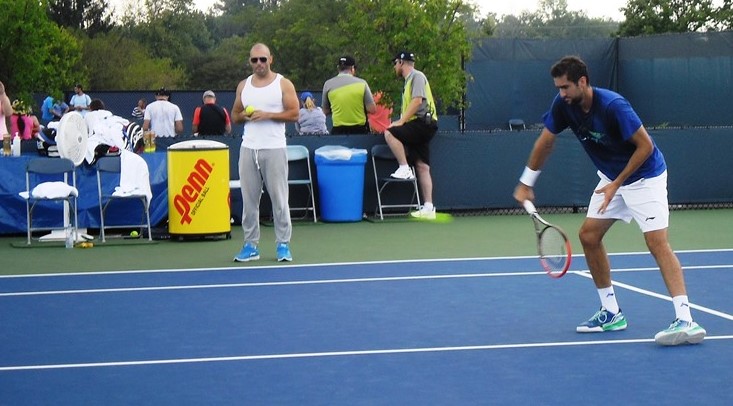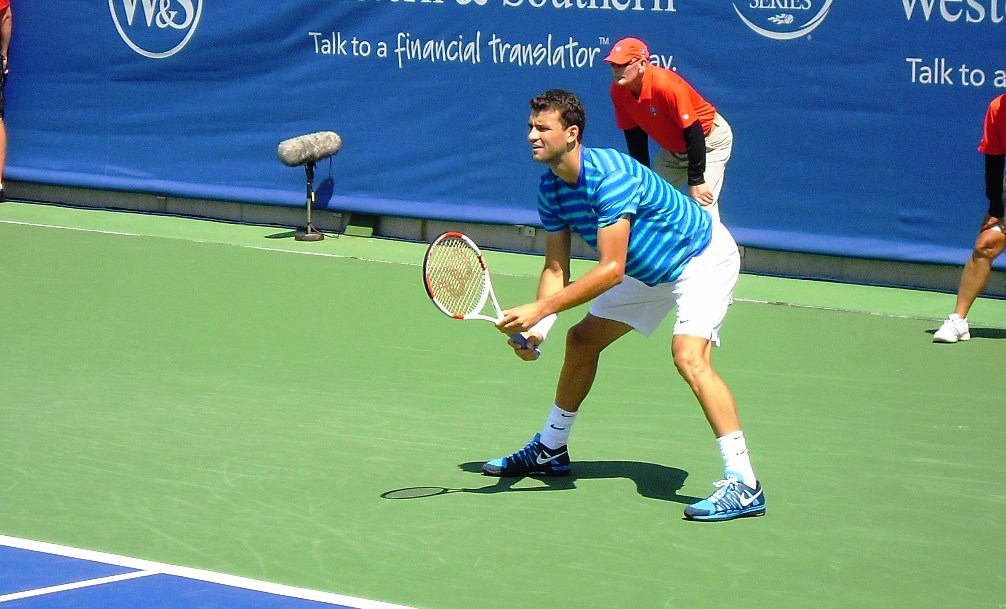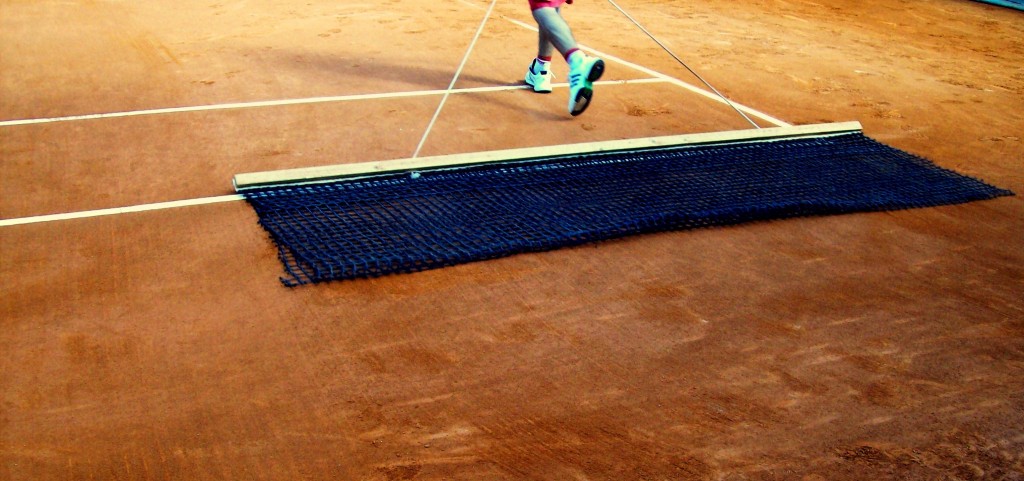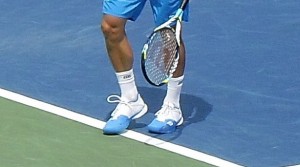As soon as the draws were announced at the Australian Open, it did not take long for the logical quarterfinals projections to be announced by the media members and tennis experts. The process is simple: you take the two highest seeds in each quarter and assume that they will beat their opponents to eventually face each other in that section of the draw for a berth in the semifinals. Thus, on the men’s draw the line up would be the following: Novak Djokovic (1) vs. Milos Raonic (8), Stan Wawrinka (4) vs. Kei Nishikori (5), Rafael Nadal (3) vs. Tomas Berdych (7), and Roger Federer (2) vs. Andy Murray (6). While those are dream match-ups for the second week and the tournament organizers, past experience tells us that the chances of this logical outcome coming to fruition is close to zero percent. Here are my takes on each quarter section, assuming that injuries play no part in the outcome:
Top quarter: Djokovic vs. Raonic
The chances of Djokovic getting upset early are close to none. He is a consistent performer in the Majors and it usually takes a monumental effort (Rafa at the French or Wawrinka 12 months ago in Melbourne are good examples) to eliminate Djokovic in a five-set battle. He rarely gets upset by lesser opponents. While I would be interested to see the talented Swede Elias Ymer do well, get past his first two rounds (tall order as it is, and not very likely), and take the stage against the number one player in the world, Djokovic is likely to get to the round of 16s without any complication. Then, he will have a more serious test, possibly against John Isner who has given him trouble in the past in two-out-of-three-sets matches. IIsner’s section, there are also couple of intriguing names, Dominic Thiem and Laurent Lokoli, who are looking for their first breakout Major tournaments. Throw in the dangerous Roberto Bautista-Agut and the in-form Gilles Muller, you have a fantastic early-round section with players battling to face Djokovic. Nevertheless, Djokovic should get to the quarters, possibly without even losing a set. Raonic’s path to the quarterfinals is a bit more complicated, but not until the third round. Once past his first two matches, he should face someone who will challenge him, such as Lleyton Hewitt or Julien Benneteau, who have wnough experience to trouble Raonic. If he gets past that, he will have to face either Feliciano Lopez who performs well in Majors and has the experience, or Gaël Monfils whom everyone fears except Nadal and Djokovic. Chances of Djokovic and Raonic meeting in the quarters: around 70%.
2nd quarter: Stan Wawrinka vs. Kei Nishikori
The big question here is “which Wawrinka will show up?” If it is the one from last year’s Australian Open or Wimbledon, look for him to steamroll his way to the quarterfinals. One player floating dangerously that nobody has heard of: Marius Copil. If he faces Wawrinka in the second round, it should be entertaining, providing that Copil does not melt under the “my-first-Major-appearance” syndrome. I do not see how Fognini, Dolgopolov, or anyone else in the third round, including Guillermo Garcia-Lopez who beat him in Paris, can stop Wawrinka. At first glance, Nishikori’s draw looks tough, but it could turn out to be a cakewalk. Nicolas Almagro would be one of the last players any seeded player cares to play in the first round, except that Almagro has not played an ATP match since Wimbledon due to a foot injury. I personally like Santiago Giraldo and Steve Johnson but I believe they are good match-up for Nishikori who can do everything they do, but a bit better. In the round of 16s, he will face the usually dangerous David Ferrer or Gilles Simon. I use the word “usually” seriously because in 2014, Ferrer was not the Ferrer that we are used to seeing for the last eight years, and Gilles Simon has battled injuries lately. I am looking for Nishikori to make it to the quarters easier than expected. Chances of Wawrinka and Nishikori meeting in the quarters: around 85%.
3rd quarter: Nadal vs. Berdych
Considering that he is not coming into the tournament on a high note, Nadal could not have asked for a better draw. Unlike Federer and Wawrinka, Nadal (like Djokovic) has the ability start a tournament on third gear, and eventually pull it to the fifth gear by the time the second week comes around. And all the names that could have given the Spaniard trouble in the early rounds are dispersed elsewhere. Don’t be fooled by some crazy upset pickers, his first round opponent Mikhail Youzhny is a shadow of his former self. The one name that stands out in his potential early-round opponents is Lukas Rosol. But this is not grass; it’s rather a slow version of hard courts. Does either Richard Gasquet or Kevin Anderson have a chance against Nadal if they play in the round of 16s? Anderson, small chance… Gasquet, none! In contrast to Nadal, Berdych has one of the hardest roads to travel in orderto reach the quarterfinals. Jurgen Melzer, his possible second-round opponent, has too much game and experience to be intimidated by neither Berdych nor a Major tournament atmosphere. Then, he will face Leonardo Mayer, Jiri Vesely, or Viktor Troicki, who are all able to cause an upset, and hungry for victories in the big stage. Even if he makes it through the first three rounds, Berdych will then have to take on a solid player such as Philipp Kohlschreiber (the last guy to get intimidated when playing a seeded player), Sam Groth (dangerous serve-and-volleyer who keeps improving steadily), or Ernest Gulbis (maybe the biggest loose cannon in the draw who can beat anybody depending on which side of the bed he wakes up that morning). Chances of Nadal and Berdych meeting in the quarters: around 60%.
4th quarter: Federer vs. Murray
Federer’s potential early-round opponents are composed of some solid names on the tour, but none good enough to cause a remarkable upset in a Major. Jeremy Chardy, Simone Bolelli, Borna Coric, Juan Monaco, Andres Seppi, Denis Istomin, can all beat a higher seeded player in any other ATP tournament (and have), or even take a set of a top player in a Major, but do not stand a chance to topple a top four seed here. Ivo Karlovic could be a dangerous fourth round opponent, but Federer seems to know how to deal with big servers, and Tommy Robredo (another potential fourth round opponent) defeating Federer in a Major will only happen once (2013 US Open). I can see Federer playing a few tiebreakers, or even losing a set (or sets) but do not see him losing prior to the quarterfinals. Andy Murray’s side has a couple of loose cannons in Marinko Matosevis and Martin Klizan who can be nightmares on the court. And yet, this is precisely what Murray needs, in order to be ready to face either Grigor Dimitrov, or David Goffin, or Dustin Brown (speaking of loose cannons), or Marcos Baghdatis, or Teymuraz Gabashvili in the fourth round. Yes, any of those can make it to the fourth round; this is by far the most contested section of the men’s draw. Again, Murray needs these tests to have a chance against Federer in the quarters, because he, like Djokovic and Nadal, can play himself into form as the tournament progresses. Chances of Federer and Murray meeting each other in the quarters: around 75%.
And now, it’s time to enjoy the first Major of 2015!
Follow MT-Desk on Tweeter throughout the tournament: @MertovsTDesk




